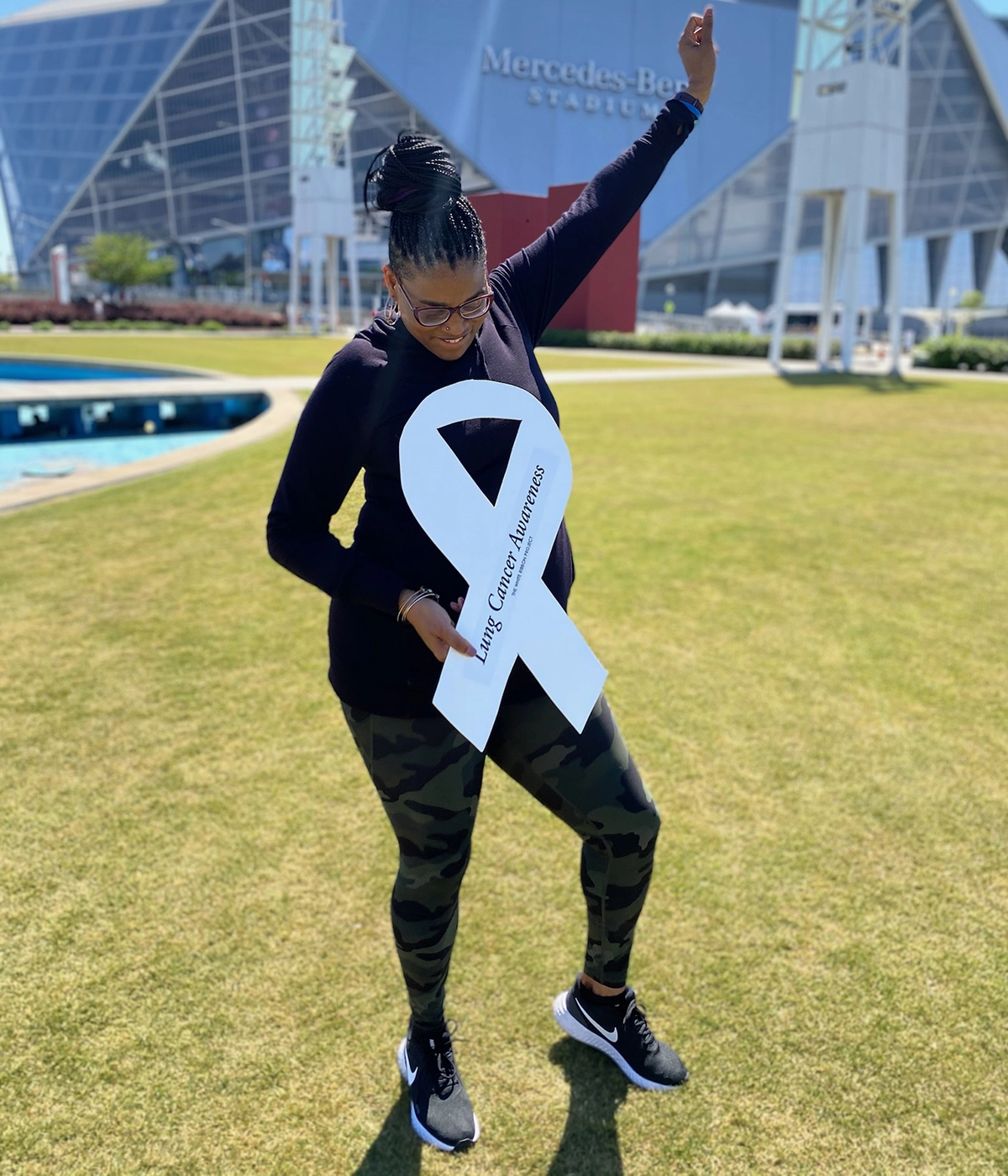In 2015, Donna decided she needed to visit the emergency room after experiencing chest pains for a few days. About a year prior, Donna had been diagnosed with type two diabetes. She had still been learning to manage this disease when her blood sugar spiked to 300, which told Donna these were not symptoms she could ignore. At the hospital, they immediately gave her fluids to address her blood sugar problems. But the doctor also ordered a chest X-ray, which showed a mass on her lungs.
“I was completely shell shocked,” Donna said. Over the next few weeks, her doctors ran numerous tests, and took a lung biopsy, that lead to a definitive diagnosis of non-small cell lung cancer (NSCLC). Luckily, it was stage 2A lung cancer, so her oncologist was optimistic. Donna had her first surgery to remove an adenocarcinoma on the upper right lobe of the lung less than a month later. The surgery was successful, but it was decided that, even though the cancer looked almost gone, Donna would do chemotherapy.
“The analogy I use [to explain why we decided to do chemo] is to think about cancer like a white powder donut. You can clean it up but if you are wearing black, you may still see little speckles all over. I wanted to get rid of those little speckles that cancer may have left,” Donna explained.
Unfortunately, Donna’s body could not tolerate the chemo and she ended up in the hospital after two sessions. Because she was considered to have no evidence of disease, her doctors decided to stop the chemo. Instead, they promised to closely monitor Donna’s health with routine follow-up scans every 4-6 months.
A Second Diagnosis
In 2022, during one of these routine follow-up scans, lung cancer was once again discovered, this time in the lower right lobe. Donna was obviously upset and wondered what could have been done to discover the cancer sooner. “Since it had been over six years, I think we all had gotten a little too comfortable. Some of my doctors had moved and were now at different practices, and so some things were lost in the shuffle from office to office. So, I was actually the first one to read and interpret my scans, and so I reached out to my oncologist,” Donna explained.
“I am a fierce believer that people should educate themselves so that they can advocate for themselves. You can do all the things right and things can be missed because doctors are human too,” she said. “When you get any types of tests done, you should ask for a copy of that when you leave especially if you are going to another doctor for a second or third opinion.”
For her second opinion, she called her previous surgeon and shared her scans. He encouraged her to get the second surgery, to remove the tumor that was in her lower right lobe. Additional testing found that Donna had the EGFR biomarker, which helped her oncologist adjust her chemotherapy and other medications so that she could tolerate it this time.
Finding a Community
After her first diagnosis in 2015, Donna did some research, hoping to find a support community. One organization that caught her eye was the American Lung Association’s LUNG FORCE. She decided to participate in her first event, a LUNG FORCE Walk in 2016. Since then, she has participated most years and even looked into helping facilitate the event. “I love being a part of the day, and experiencing the community and connection that happens which is why I try to walk every year,” Donna said.
Donna is also happy to be a part of a group that raises funds for research. As a non-smoker she is interested in learning how environmental factors may have contributed to her cancer diagnosis. “I can see where the research has gone, and the changes that have been made, specifically the drugs and treatments for lung cancer patients. Specifically, there is now targeted treatment for EGFR positive biomarker,” she said.
After her second diagnosis, Donna became even more resolute in her need to advocate. “When I was diagnosed in 2015, I didn’t believe that there were other people with lung cancer who looked like me; black women. I didn’t think that my story was as important because I had gotten relatively lucky,” she said.
“Flash forward to 2022, it is a different world. This second diagnosis has given me the courage I needed to find my purpose in life and to grow. I am more able to share my story with others. I am now a part of a group of Black women with lung cancer who began communicating online and formed a support group. It’s like a sisterhood,” Donna explained.
Going forward, Donna is interested in learning how environmental factors may have contributed to her cancer diagnosis. “I had never smoked but I have moved a good amount, and lived in cities with heavy pollution and a variety of apartments that could have many different environmental factors that may have contributed to my sickness.”
And most importantly, Donna will never miss a follow-up scan. “I know for some it can be costly, especially if you do not have insurance, but it is so important and can save your life.”
Have more questions about lung cancer? Connect with the Lung HelpLine.
Blog last updated: October 16, 2025




